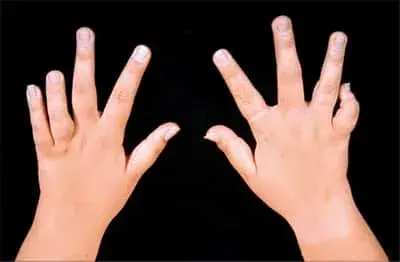It is well known that arthritis is usually associated with older people. However, pain is not only limited to older folks or adults. Surprisingly, kids can experience arthritis, too. As per the Arthritis Foundation, juvenile arthritis is a term that encompasses all forms of arthritis of unknown etiology lasting for at least 6 weeks and with onset before the age of 16 years. There are many types of juvenile rheumatoid arthritis, the most common of which is Juvenile Idiopathic Arthritis (JIA).
JIA, which was previously known as Juvenile rheumatoid arthritis (JRA) and frequently referred by doctors in the present day, is the most common type of arthritis in children.
In this article, we will let you know the basics of this type of arthritis in detail.What is Juvenile Idiopathic Arthritis?

Juvenile Idiopathic Arthritis is a long-term condition characterized by stiffness, swelling, and pain in the joint. It causes inflammation, stiffness, redness, swelling, warmth, and soreness which thereby limits the mobility of an individual.
Types of Juvenile Idiopathic Arthritis
- Systemic arthritis: This type of JIA mainly affects all body systems and is widespread among both girls and boys.
- Oligoarthritis: Known by different names, as uveitis, iridocyclitis or iritis, this type of Juvenile Idiopathic Arthritis affects less than 5 joints in the body (generally the knee, ankle, and wrist) during the first 6 months and is more common in girls.
- Polyarthritis: This is a type of Juvenile Idiopathic Arthritis which involves five or more joints in the first 6 months.
- Psoriatic arthritis: This type of JIA occurs in children with arthritis and psoriasis.
- Enthesis related arthritis: Enthesis related arthritis is another type of JIA that affects the places where tendons attach to the bones. The condition also affects the spine, hips, and eyes and usually occurs in boys above the age of 8 years.
Juvenile Idiopathic Arthritis - Indian Scenario
According to the estimates, the overall prevalence of JIA is estimated to have increased from 0.07 to 4.1 per 1000 children, with an incidence of 0.008 to 0.226 cases of JIA per 1000 children.
How Juvenile Idiopathic Arthritis is caused?
Although the exact cause of JIA is unknown, researchers believe that JIA is primarily an autoimmune disease. In autoimmune diseases, the immune system cannot distinguish between the healthy cells in the body from the harmful ones like viruses and bacteria.
This triggers the immune system to mistakenly attack the harmless cells considering them as dangerous invaders.
What Are The Signs And Symptoms Of JIA?
Most of the cases of JIA are mild. Though, sometimes severe cases may lead to complications like joint damage and chronic pain. As a result, it is very important to know the symptoms of JIA for getting treatment before the condition progresses.
The clinical symptoms of juvenile idiopathic arthritis can be relatively variable as they differ from child to child. They may change over time, sometimes overnight. Some of the prominent symptoms are:
- Joint pain, warmth, stiffness, and swelling: Most common symptoms of JIA include joint pain followed by swelling. Unfortunately, most of the children fail to recognize or do not report pain, due to which they suffer a lot. Severe stiffness and swelling occurs mostly in the morning.
- Joint deformity: Deformity in the joints is another prominent symptom which is witnessed in JIA. Additionally, the joints may grow abnormally and in an asymmetrical way which may lead to deformities of the extremity involved.
- Growth problems: Children with JIA often grow more slowly than average. Growth may be fast or slow in an affected joint, causing one arm or leg to be longer than the other.
- Eye irritation, pain, and redness: Most of the affected children with JIA experience pain, irritation and redness of the eyes. The most common types of eye inflammation in JIA are uveitis and iritis.
- Recurrent fevers: Recurrent fever is also experienced in affected children. The fever may spike as often as several times in one day.
- Rash: A faint, salmon-colored rash is also visible in Juvenile arthritis which may come and go without explanation.
- Weight loss: Another common prominent symptom in children with JIA is weight loss. The affected children do not feel like eating.
How Is JIA Diagnosed?
Generally, the diagnosis for JIA is done through a physical exam followed by noting a detailed medical history. The condition may develop over days or sometimes weeks, which can make the diagnosis difficult at the time of presentation.
Additionally, the doctor may prescribe some diagnostic tests in order to get a better idea about the condition. These tests include:
- C-reactive protein test: This diagnostic test is used to determine the amount of C-reactive protein (CRP) in the blood. CRP is a substance produced by the liver in response to inflammation. Amount of CRP in the blood helps to conclude the inflammation.
- Rheumatoid factor test: This test detects the occurrence of rheumatoid factor (a protein produced by the immune system). As rheumatoid factor can attack healthy tissues in the body, the presence of this protein can help in rapid diagnosis.
- Antinuclear antibody: An antinuclear antibody test demonstrates the incidence of protein present in the blood.
- X-ray or MRI scan: Imaging tests like X-ray or MRI scans helps to rule out other conditions that cause joint inflammation or pain due to infections and fractures.
In some specific cases, the doctor may ask you to consult an orthopedic surgeon to examine the joints and also take samples of joint fluid in order to confirm diagnosis.
What Are The Complications Of JIA?
If you notice any of the above symptoms of JIA, it is very important to seek medical care. If the condition is left untreated, it can lead to the following complications:- Severe damage to the joints
- Limited growth
- Deformities in the joints
- Loss of hand function, if not treated properly
How Is JIA Treated?
In general, the utmost goal of the treatment while treating JIA is to stop the pain and inflammation and improve the child's quality of life. The line of treatment includes curbing the pain and discomfort through medication therapy.
Certain prescribed medications for JIA include both steroidal and non-steroidal meds meant to relieve pain and inflammation, along with medications to prevent permanent damage to the bones and cartilage.
In certain cases, a child may require corticosteroid injections in the joint. Surgical methods are very rarely used to treat JIA, especially during the early stages of the condition.
- Medications/painkillers: Certain nonsteroidal anti-inflammatory drugs (NSAIDs) are prescribed by a pediatric rheumatologist to relieve inflammation and pain by limiting the release of harmful chemicals from white blood cells.
- Physical therapy: An appropriate physical therapy program is essential to manage JIA. A physical therapist may recommend range-of-motion exercises to restore flexibility in stiff, sore joints and other exercises to help build strength.
- Regular exercise: It is very important to regularly exercise while treating JIA. Muscles must stay strong and healthy so they can help support and protect joints.
- Occupational therapy: This therapy helps the affected youngsters to learn new things, habits to follow everyday, like how to carry a bag without putting much stress on the joints.
- Nutrition: Children with JIA regularly experience fatigue and loss of appetite due to their grieving condition. Children have difficulty in eating if they experience pain in their jaw or fingers. Considering this, a well-balanced meal must be provided to the child with adequate calories so as to keep their energy up.
Final Thoughts
Juvenile idiopathic arthritis is the most common rheumatic disease affecting children and is a significant cause of both short- and long-term disabilities.
Excessive delay in treating JIA can result in irretrievable damage to joints and other organs and can also hamper skeletal maturation. Therefore, early detection of JIA is very crucial to ensure prompt treatment and also to prevent long-term complications.
Related Read - Knee pain - Your child's complain are not fake excusesIf you want to get checked your child by the Best Pediatric Rheumatologist in India, call us at +918010994994 for guidance by our in-house doctors.
Reviewed by







